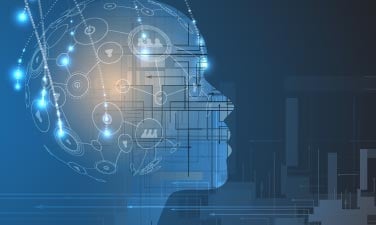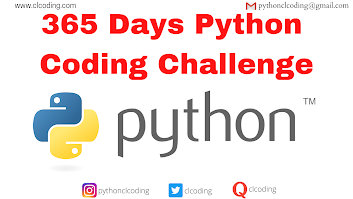Data science and machine learning are powerful because they turn data into insights, predictions, and decisions. But beneath those algorithms and models lies a foundation of mathematics: calculus to understand change and optimization, linear algebra to manipulate multidimensional data, numerical analysis to approximate complex calculations, and algebra to manage transformations.
Without a strong grasp of these fundamentals, many data-science concepts — from feature transformations to model optimization — remain opaque. The Expressway to Data Science specialization is built to fill exactly this gap: it gives you the mathematical tools so that when you start working with data, models, or real ML pipelines, you understand what’s going on “under the hood.”
If you’re new to data science—or if you know some coding but feel shaky on math—this specialization acts as a solid bridge from basic math to data-science readiness.
What the Specialization Covers — Courses & Core Mathematical Topics
The specialization is divided into three courses, each targeting a key area of math that’s foundational for data science.
1. Algebra and Differential Calculus for Data Science
-
Revisits algebraic concepts including functions, logarithms, transformations, and graphing.
-
Introduces differentiation: what derivatives are, how to compute them, and how they help you understand rate of change — a core idea behind optimization in ML.
-
Helps build intuition about how functions behave, which becomes useful when you start handling loss functions, activation functions in neural networks, and data transformations.
2. Essential Linear Algebra for Data Science
-
Covers vectors, matrices, matrix operations: addition, multiplication, solving linear systems — all essential for representing data, transformations, and ML pipelines.
-
Teaches matrix algebra, systems of equations, and how to convert linear systems into matrix form — foundational for understanding data transformations, dimensionality reduction (e.g. PCA), and much more.
-
Introduces numerical analysis aspects tied to linear algebra, which can help when dealing with large datasets or computationally heavy tasks.
3. Integral Calculus and Numerical Analysis for Data Science
-
Builds on calculus: includes integration techniques (e.g. integration by parts), handling more complex functions, and understanding areas, continuous change, etc.
-
Introduces numerical analysis: methods to approximate solutions, evaluate numerical stability, work with approximations — very relevant for data science when exact solutions are difficult or data is large.
-
Combines ideas from calculus and numerical methods to give you tools for modeling, computation, and analysis that are more robust.
Who Should Take This Specialization — Ideal Learners & Goals
This specialization is especially well-suited if you:
-
Are beginning your journey in data science and need a strong math foundation before diving into ML, statistics, or advanced data modeling.
-
Have some programming background or interest in data analysis but feel weak or uncertain about math fundamentals (algebra, calculus, matrices).
-
Want to prepare for more advanced data-science/ML courses — many of those expect comfort with linear algebra, calculus, and numerical reasoning.
-
Are planning to do statistical modeling, machine learning, or AI work where understanding underlying math helps you debug, optimize, and reason about model behavior.
-
Prefer structured learning: this specialization provides a clear curriculum, paced learning, and a gradual build-up from basics to applied math.
Basically, if you want to treat data science not just as “plug-and-play” tools, but as a discipline where you understand what’s happening behind the scenes — this course helps build that clarity.
Why This Specialization Stands Out — Strengths & Value
-
Focused and Relevant Curriculum: Unlike generic math courses, this program tailors algebra, calculus, linear algebra and numerics specifically for data science needs.
-
Balanced Depth and Accessibility: It doesn’t presume you’re a math whiz — the courses start from basics and build gradually, making them accessible to many learners.
-
Prepares for Real Data Science Work: The math you learn here is directly applicable to ML algorithms, data transformations, modeling, and optimization tasks — giving practical value beyond theory.
-
Flexibility and Self-Paced Learning: You can work at your own pace, revisiting topics if needed, which is great especially if math isn’t your strongest suit.
-
Strong Foundation for Advancement: After this specialization, you’ll be better equipped to take up courses in machine learning, statistics, deep learning — with the math background to understand and apply them properly.
What to Keep in Mind — Expectations & How to Maximize It
-
Self-practice matters: Just watching lectures isn’t enough — practicing problems, working out matrix calculations, derivatives, integrals will help solidify concepts.
-
Supplement with coding/data experiments: Try implementing small data manipulations or numerical experiments (with Python, NumPy, etc.) — math makes more sense when seen in data context.
-
This is a foundation — not the end: While the specialization gives you core math, working on real-world data science or ML projects will build intuition, experience, and deeper understanding.
-
Upgrade math mindset: Think of math as a tool — not just formulas. Understanding when and why to use derivatives, matrix algebra, numerical approximations, helps you reason about models and data better.
How Completing This Specialization Can Shape Your Data Science Journey
By finishing this specialization you will:
-
Gain confidence in handling mathematical aspects of data science — from data transformations to model optimization.
-
Be ready to understand and implement machine-learning algorithms more deeply rather than treating them as black-box libraries.
-
Build a solid foundation that supports further learning in ML, statistical modeling, deep learning, or even data engineering tasks involving large data and computation.
-
Improve your problem-solving approach: math equips you to think clearly about data, relationships, transformations, and numerical stability — key aspects in data science.
-
Make your learning path more structured — with strong math grounding, you’ll likely find advanced courses more comprehensible and rewarding.
Join Free: Expressway to Data Science: Essential Math Specialization
Conclusion
If you’re serious about becoming a data scientist — especially one who understands not just how to use tools, but why and when they work — the Expressway to Data Science: Essential Math Specialization is an excellent starting point.
It builds the mathematical backbone essential for data science and machine learning, while remaining accessible, well-structured, and practical. By mastering algebra, calculus, linear algebra, and numerical analysis, you equip yourself with a toolkit that will serve you throughout your data-science journey.










.jpeg)





.png)










.png)























